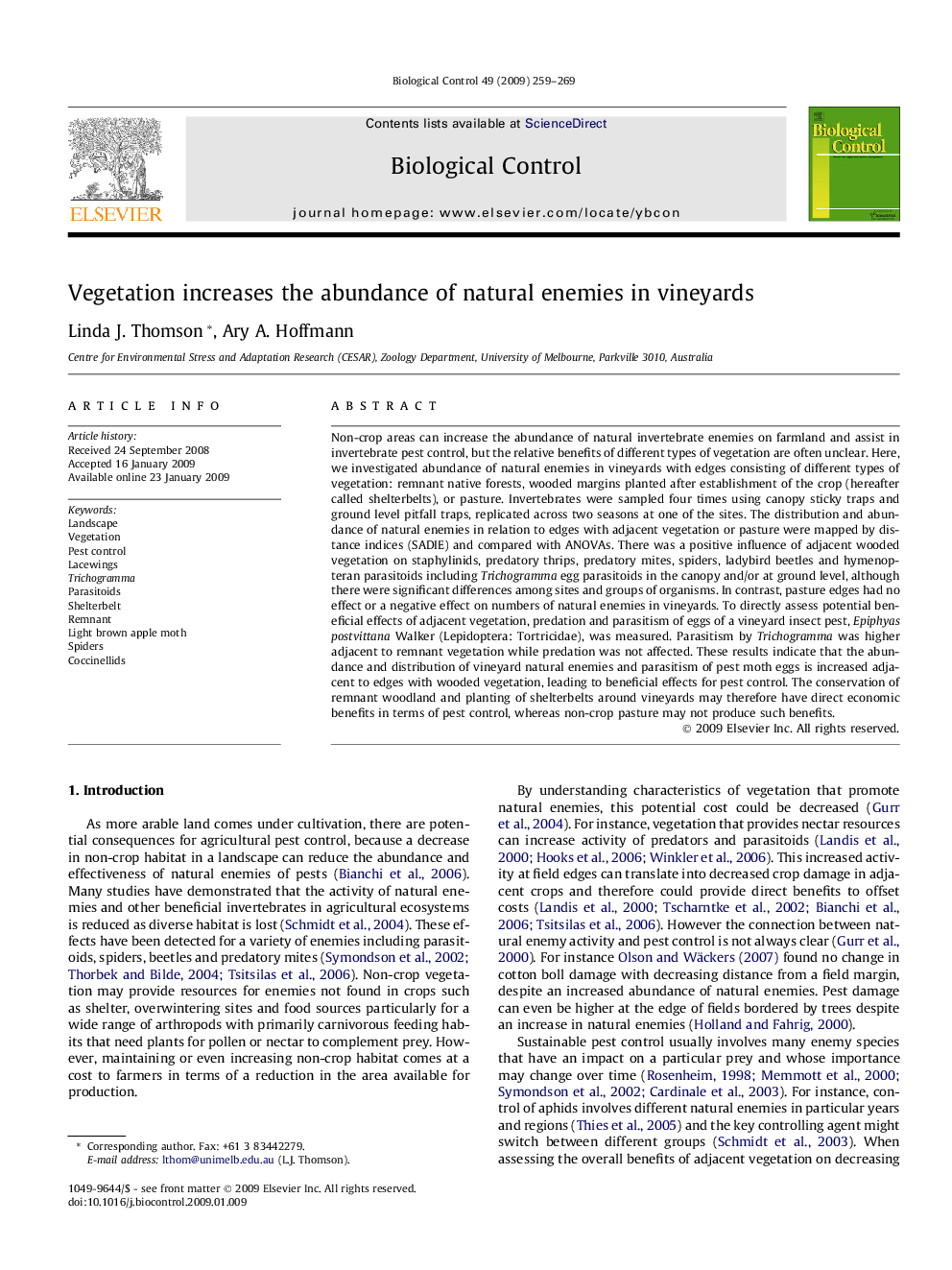| کد مقاله | کد نشریه | سال انتشار | مقاله انگلیسی | نسخه تمام متن |
|---|---|---|---|---|
| 4504719 | 1321107 | 2009 | 11 صفحه PDF | دانلود رایگان |

Non-crop areas can increase the abundance of natural invertebrate enemies on farmland and assist in invertebrate pest control, but the relative benefits of different types of vegetation are often unclear. Here, we investigated abundance of natural enemies in vineyards with edges consisting of different types of vegetation: remnant native forests, wooded margins planted after establishment of the crop (hereafter called shelterbelts), or pasture. Invertebrates were sampled four times using canopy sticky traps and ground level pitfall traps, replicated across two seasons at one of the sites. The distribution and abundance of natural enemies in relation to edges with adjacent vegetation or pasture were mapped by distance indices (SADIE) and compared with ANOVAs. There was a positive influence of adjacent wooded vegetation on staphylinids, predatory thrips, predatory mites, spiders, ladybird beetles and hymenopteran parasitoids including Trichogramma egg parasitoids in the canopy and/or at ground level, although there were significant differences among sites and groups of organisms. In contrast, pasture edges had no effect or a negative effect on numbers of natural enemies in vineyards. To directly assess potential beneficial effects of adjacent vegetation, predation and parasitism of eggs of a vineyard insect pest, Epiphyas postvittana Walker (Lepidoptera: Tortricidae), was measured. Parasitism by Trichogramma was higher adjacent to remnant vegetation while predation was not affected. These results indicate that the abundance and distribution of vineyard natural enemies and parasitism of pest moth eggs is increased adjacent to edges with wooded vegetation, leading to beneficial effects for pest control. The conservation of remnant woodland and planting of shelterbelts around vineyards may therefore have direct economic benefits in terms of pest control, whereas non-crop pasture may not produce such benefits.
Journal: Biological Control - Volume 49, Issue 3, June 2009, Pages 259–269